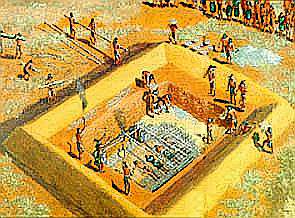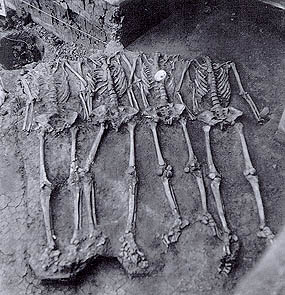
Burial of a Chief.

An expression of a chief's power - immolation victims from Mound 72, Cahokia.
- It is a ranked society in which one's position and power are determined by how closely related one is to the chief and his lineage or corporate group.
- The chief lacks a consistently available and effective means of physical coercion. In other words, a chiefdom lacks an army, or police to enforce the chief's will by physical means.
- The chief has at his disposal two levels of administrative control, those associated with the settlement and mound center of his residence, and the smaller settlements administered by lesser chiefs who are often his relations.
- Sufficient wealth is controlled by the ruling elite who often employ craft specialists, at least on a part-time basis.
- In chiefdoms, political and religious power are closely intertwined, so much so that the chief and his family are revered as almost god-like.
- The elite tries to convince his followers to produce more and more food surplus by investing in any activity that increases food production.
- Chiefdoms are an extraordinarily competitive type of social organization